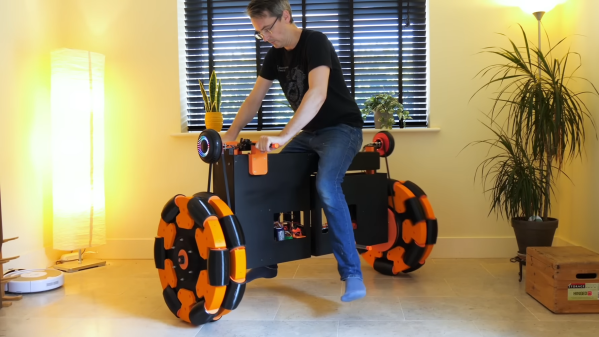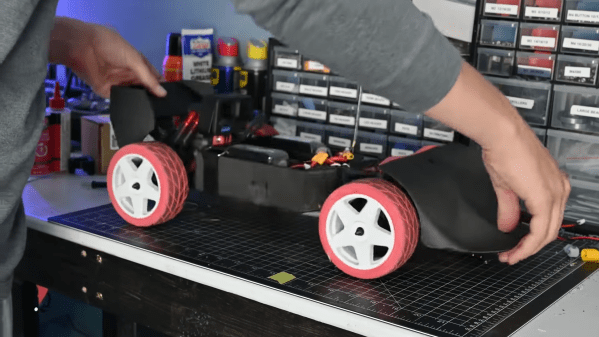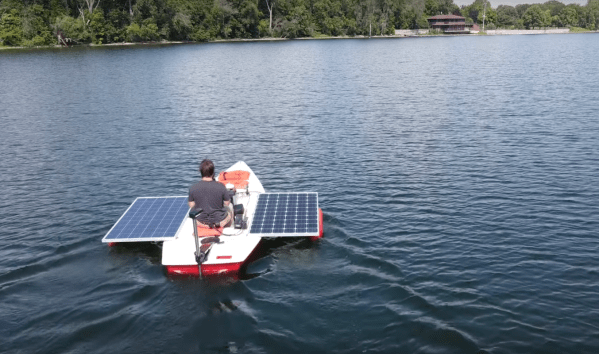Segways stunned the world when they first hit the market in 2001. Hoverboards then terrified the world with nasty accidents and surprise fires. [James Bruton] loves hoverboards regardless, and set out on a mighty upgrade regime turning the ride-on toy into a giant omniwheeled bicycle.
The build relies on two giant omniwheels of [James’s] own creation, using lasercut and 3D-printed parts. The wheels are mounted perpendicularly on either end of a boxy plywood “bike frame” built in two sections, with a split in the middle. The two halves can rotate relative to each other, much like the two halves of a stock hoverboard.
Amazingly, the build relies on the stock hoverboard motors and electronics. The hoverboard wheel motors are responsible for driving the omniwheels at either end via a toothed belt drive. The gear ratio of the belt reduction is set up to cancel out the greater diameter of the omniwheels, such that the hoverboard’s tuning isn’t disrupted. Wisely, [James] also fitted a safety power cutout, too.
The result is a self-balancing “bike” the likes of which you’ve never seen before. At present, it can balance upright and rotate relatively well. However, control is difficult, requiring the use of the rider’s body weight and the twisting of the bike’s sections. [James] has instead contemplated using servos to tilt the hoverboard sensors instead for an easier control method than the current setup.
It’s a truly bonkers build which is a testament to [James’s] creativity and prowess. We’ve seen some other great hoverboard hacks before, but nothing quite like this. Video after the break.
Continue reading “Hoverboard Turned Into Bonkers Omniwheeled Bike”


















